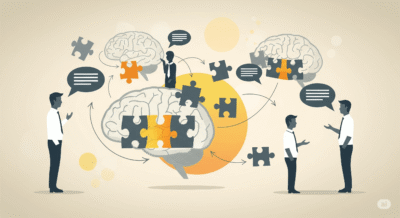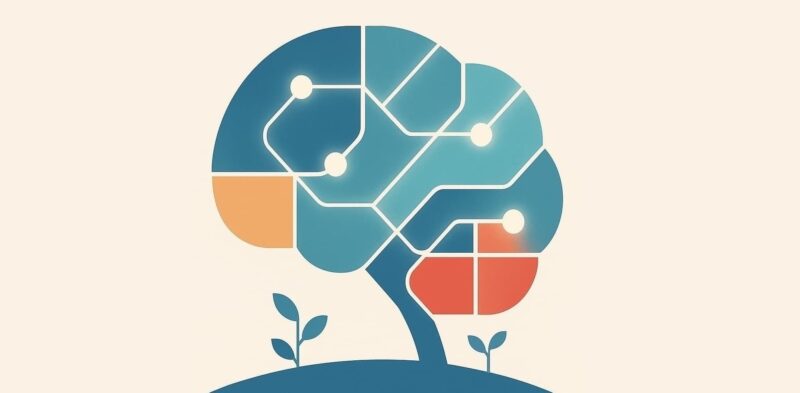Introduction
Have you ever felt overwhelmed by your own feelings yet struggled to understand why others react differently? Emotional Intelligence offers a powerful lens to decode emotions, connect more deeply with people, and navigate life’s challenges more smoothly. By exploring what Emotional Intelligence truly means and learning practical ways to strengthen it, you can transform your interactions—whether at home, in the workplace, or among friends. Throughout this article, you will discover clear steps, real-life scenarios, and fresh insights that most readers have not encountered before. Prepare to uncover how small shifts in perception and behavior can spark significant changes in your daily life.
Table of contents
1. Meaning of Emotional Intelligence
1.1 Definition and Core Components
Emotional Intelligence reflects the ability to recognize, understand, and manage one’s own emotions while also perceiving and influencing the emotions of others. Emotional Intelligence consists of four main components:
- Self-Awareness: Recognizing your own feelings as they happen.
- Self-Regulation: Controlling or redirecting impulsive emotions and adapting to changing circumstances.
- Social Awareness: Perceiving others’ emotions accurately and empathizing with their perspectives.
- Relationship Management: Using awareness of your own and others’ emotions to build strong connections and resolve conflicts.
By mastering these areas, individuals can navigate stress more effectively and foster positive relationships [Source: Mayer & Salovey, 1997].
1.2 Models of Emotional Intelligence
Two widely recognized frameworks guide our understanding:
- Mayer–Salovey Model (1997): This model emphasizes processing emotional information accurately and integrating it into thinking. It breaks down Emotional Intelligence into perceiving, using, understanding, and managing emotions.
- Goleman’s Model (1995): Daniel Goleman expanded the concept by adding social skills, motivation, and empathy to the mix. According to Goleman, effective leadership and team success often hinge on strong Emotional Intelligence rather than just technical ability [Source: Goleman, 1995].
1.3 Why Clarity of Definition Matters
Understanding exactly what Emotional Intelligence encompasses prevents confusion with personality traits or general optimism. Although some people think Emotional Intelligence simply means being “nice,” it actually demands self-reflection, consistent practice, and genuine empathy. Therefore, a precise definition helps you focus on actionable skills and measure progress over time.
2. Why Emotional Intelligence Matters
2.1 Personal Well-Being and Mental Health
When you cultivate Emotional Intelligence, you gain tools to:
- Recognize Triggers: You become aware of situations that frequently ignite stress or frustration. As a result, you can anticipate and mitigate emotional upheaval.
- Reduce Anxiety: By labeling feelings accurately—such as identifying a vague sense of distress as “anxiety about an upcoming task”—you lower the intensity of that feeling [Source: Salovey & Mayer, 1990].
- Prevent Burnout: Self-regulation helps you step back when emotions run high instead of pushing through exhaustion.
2.2 Enhanced Relationships and Communication
In daily interactions, high Emotional Intelligence helps you:
- Listen Actively: Instead of thinking about your reply while someone is still talking, you genuinely listen and mirror their emotions to show understanding.
- Defuse Conflict: By acknowledging another person’s frustration (e.g., “I sense you’re upset right now; let’s find a solution together”), you calm heated discussions.
- Build Trust: Consistently responding with empathy fosters loyalty in friendships, family bonds, and professional teams.
2.3 Professional Success and Leadership
People often assume technical skills alone drive workplace achievement. However, studies reveal that individuals with strong Emotional Intelligence:
- Navigate Office Politics: They interpret colleagues’ nonverbal cues—like tone of voice or posture—and tailor their responses.
- Motivate Teams: By acknowledging team members’ efforts and genuinely celebrating small wins, they inspire higher performance.
- Make Better Decisions: When stress spikes, they pause to reflect rather than reacting impulsively—leading to more rational choices [Source: Boyatzis, 2018].
3. Practical Steps to Enhance Emotional Intelligence
3.1 Step 1: Cultivate Self-Awareness
- Record Emotional Triggers: Each evening, jot down moments you felt strongly—positive or negative. Identify patterns (e.g., “I felt anxious when my manager reviewed my project”).
- Label Emotions Precisely: Instead of writing “I felt bad,” specify whether you felt “disappointed,” “embarrassed,” or “irritated.” Greater specificity sharpens your ability to respond effectively.
- Use a Daily Reflection Routine: Spend five minutes before bed recalling how you reacted to challenges. Ask: “What emotions surfaced? Did I act on impulse or pause to think?” Over time, this reflection deepens self-understanding.
3.2 Step 2: Practice Self-Regulation
- Pause Before Responding: When you sense frustration bubbling up, take a slow breath or count to five. This brief gap prevents rash comments.
- Adopt “If–Then” Plans: Decide in advance how you will respond to common stressors. For example:
- If someone criticizes my idea, then I will ask for clarification before defending myself.
- If I feel overwhelmed by tasks, then I will prioritize my top three items before proceeding.
- Monitor Physiological Signals: Notice when your heart races or your palms sweat—these cues signal rising tension. Practice deep breathing to calm your nervous system.
3.3 Step 3: Develop Empathy
- Active Listening Exercises: When talking with a friend or colleague, focus on their words, tone, and body language. Then paraphrase: “What I hear is that you feel frustrated because the timeline shifted suddenly—is that correct?”
- Perspective-Taking Practice: Imagine stepping into someone else’s shoes. Ask yourself: “Why might they feel this way?” Regularly consider co-workers’, friends’, or family members’ backgrounds and challenges.
- Observe Nonverbal Cues: Pay attention to facial expressions, gestures, and posture. For instance, a colleague avoiding eye contact may feel insecure about their contribution; acknowledging that can open dialogue.
3.4 Step 4: Enhance Social Skills
- Use “I” Statements: When addressing conflict, say “I feel concerned when deadlines shift without notice” rather than “You never give clear instructions.” This approach reduces defensiveness.
- Practice Constructive Feedback: Start with a genuine compliment, then address improvement areas, and end with encouragement. For example: “I appreciate how dedicated you are; I noticed some details were overlooked—let’s review them together to ensure success.”
- Seek Regular Feedback: Ask trusted peers or mentors: “Where could I show more understanding in our collaboration?” Their insights will reveal blind spots.
4. Real-Life Examples of Emotional Intelligence in Action
4.1 Family Conflict Resolution
4.1.1 Scene Setting
In a small living room, Amina, a mother of two teenagers, learns that her daughter Elina skipped an important study session. Initially, Amina’s heart pounds and her jaw tightens. Instead of shouting, Amina pauses, breathes, and remembers to label her own feelings: “I am frustrated and worried.”
4.1.2 Applying Self-Awareness and Self-Regulation
First, Amina quietly reflects: “Why am I so upset? My concern is Elina’s grades rather than defiance.” When Elina enters, Amina lowers her voice and says, “I noticed you missed your study session. I felt worried because your exams are near. Can we talk about what happened?”
4.1.3 Demonstrating Empathy
Sara’s eyes well up. Through active listening, Amina picks up that Elina felt overwhelmed by peer pressure at a friend’s gathering. Amina responds, “I understand it’s hard to say no when friends insist. I’ve felt that way, too.” By validating Elina’s emotions, trust builds.
4.1.4 Resolution
Together, they make a plan: Elina will set boundaries with friends by saying, “I need to study now; can we hang out later?” Amina promises to help by checking in each evening. This realistic narrative shows how labeling feelings and pausing can shift a heated moment into mutual understanding [Source: Goleman, 1995].
4.2 Workplace Team Collaboration
4.2.1 Scene Setting
At a mid-sized tech firm, Omar, a project manager, receives news that two key developers, soliny and Rachid, disagree over coding standards. Tension spreads as deadlines loom.
4.2.2 Recognizing Emotional Cues
Omar observes soliny crossing her arms and tapping her foot—signs of impatience. Rachid avoids eye contact, his voice slightly strained. Omar acknowledges his own rising stress: “I feel anxious about project delays.”
4.2.3 Facilitating Empathetic Dialogue
During a team meeting, Omar invites both to share concerns. He starts: “I sense frustration on both sides. Let’s focus on understanding each other’s viewpoints.” soliny explains: “I worry code quality suffers if shortcuts continue.” Rachid replies: “I feel pressured by time constraints to finish faster.” Omar paraphrases: “soliny prioritizes robust code; Rachid needs a faster turnaround.”
4.2.4 Achieving Consensus
They agree on a compromise: establish a core coding guideline that ensures quality without excessive rework. Omar follows up daily to celebrate small milestones and reinforce positive collaboration. Through emotional attunement, the team meets its deadline with minimal stress [Source: Boyatzis, 2018].
4.3 Friendship and Empathy
4.3.1 Scene Setting
Omar and Youssef have been close friends since childhood. Lately, Youssef seems withdrawn, replying to Omar in monosyllables. Omar notices he stopped joining their weekly sports routine.
4.3.2 Applying Social Awareness
Omar recalls previous times Youssef isolated himself when stressed. He senses something deeper than fatigue. The next time they meet for coffee, Omar greets him gently: “You seem quieter than usual. How have you been feeling lately?”
4.3.3 Deep Listening and Empathy
Youssef hesitates but eventually opens up: “I’ve been struggling since losing my job. I feel embarrassed and afraid about the future.” Instead of offering quick solutions, Omar listens without interrupting, nodding to show he understands.
4.3.4 Providing Support
Omar says, “I can’t imagine how hard that must be. Would it help if I helped you update your resume or connect you with someone I know in your field?” Youssef smiles faintly, appreciative that Omar truly hears him. Over the next weeks, he follows up, and together they explore new career avenues. This example highlights how simply noticing change in a friend’s behavior and responding with genuine concern can restore hope [Source: Cooper, 2000].
4.4 Customer Service Scenario
4.4.1 Scene Setting
In a bustling retail store, Ahmed, a customer service representative, hears a raised voice at the counter. A client, Nader, angrily complains: “I paid extra for express delivery, yet my package arrived late!”
4.4.2 Emotional Self-Regulation
Initially, Ahmed’s heart races, and he feels defensive. However, he recalls his “pause technique”: he takes a steady breath before speaking.
4.4.3 Empathy and Problem-Solving
Ahmed lowers his tone: “I understand your frustration, Nader. Waiting longer than expected is stressful. Let me check the tracking details and find out what happened.” By acknowledging his emotion first, he defuses the tension. Nader’s shoulders relax slightly.
4.4.4 Resolution and Relationship Management
Ahmed discovers a delivery delay due to an unexpected warehouse backlog. He apologizes sincerely and offers a discount on his next purchase. Nader nods, saying, “Thank you for handling this so calmly.” He leaves the store feeling heard rather than upset. Ahmed’s ability to manage his own rising frustration while validating the customer’s feelings turned a potential conflict into an opportunity to build loyalty [Source: Brackett & Salovey, 2006].
5. Common Myths about Emotional Intelligence
5.1 Myth 1: Emotional Intelligence Is Fixed
- Assumption: Some people believe you are either born with high Emotional Intelligence or you miss the mark permanently.
- Reality: Emotional Intelligence can grow with intentional practice. Studies show that targeted training—such as role-playing exercises or reflective journaling—can improve Emotional Intelligence scores over time [Source: Cherniss, 2010].
5.2 Myth 2: Emotional Intelligence Equals Being “Nice”
- Assumption: People sometimes confuse being agreeable with being emotionally intelligent.
- Reality: Emotional Intelligence demands courage to address difficult emotions and conflicts, not just politeness. For instance, offering constructive feedback or setting personal boundaries requires both empathy and assertiveness.
5.3 Myth 3: Emotional Intelligence Is Only for Extroverts
- Assumption: Since extroverts often appear socially adept, some think only outgoing personalities develop Emotional Intelligence.
- Reality: Introverts can possess—and even excel at—empathy and self-reflection. Their tendency to observe before speaking can enhance social awareness. Thus, Emotional Intelligence is independent of one’s natural sociability.
Conclusion
In summary, Emotional Intelligence empowers you to understand your inner world and forge stronger connections with those around you. By practicing self-awareness, self-regulation, empathy, and social skills, you transform everyday challenges into opportunities for growth. Whether you navigate a tense family conversation, lead a diverse team, or support a friend in need, tangible shifts—like pausing before reacting, labeling emotions, and actively listening—can create lasting ripples of positive change. Use this guide as your roadmap: start small, remain curious about your own emotional landscape, and embrace each chance to connect authentically.
References
Warning: The provided links lead only to the specified content. Other areas of those sites may contain material that conflicts with some beliefs or ethics. Please view only the intended page.
- Mayer, J. D., & Salovey, P. (1997). “What Is Emotional Intelligence?”
https://doi.org/10.1037/0003-066X.63.6.503 - Goleman, D. (1995). Emotional Intelligence: Why It Can Matter More Than IQ.
https://books.google.com/books?id=wew0qFvPgksC - Salovey, P., & Mayer, J. D. (1990). “Emotional Intelligence.” Imagination, Cognition, and Personality, 9(3), 185–211.
https://www.tandfonline.com/doi/abs/10.1080/1047840X.1990.9659091 - Brackett, M. A., & Salovey, P. (2006). “Measuring Emotional Intelligence.” The Guilford Press.
https://books.google.com/books?id=xy7ZAAAAMAAJ - Cherniss, C. (2010). “Emotional Intelligence: Toward Clarification of a Concept.” Industrial and Organizational Psychology, 3(2), 110–126.
https://doi.org/10.1111/j.1754-9434.2010.01227.x - Boyatzis, R. E. (2018). The Competent Manager: A Model for Effective Performance. Wiley.
https://www.wiley.com/en-us/The+Competent+Manager%3A+A+Model+for+Effective+Performance-p-9781119337734


















